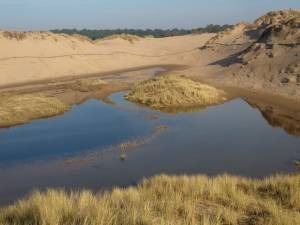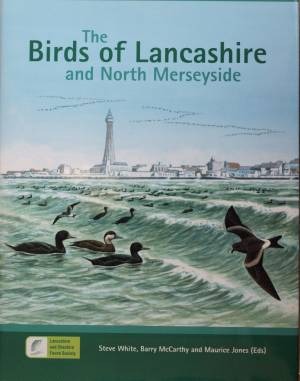Dr Phil Smith’s Wildlife Notes
February 2008
The sunniest February since records began contrasted with the heavy rain of earlier winter months which led to extensive flooding of the sand-dune slacks. This was not quite up to the “Lake District” conditions of 1995, but still pretty impressive and augers well for our Natterjack Toads when breeding begins in April.

Spring seems to come earlier each year and there was plenty of evidence in this month’s sunshine, with Seven-spot Ladybirds, Peacock butterflies and Red-tailed Bumblebees reported on the 6th, followed by Small Tortoishells and Holly Blues a few days later. Flowers in the dunes included the first Daffodils, Primroses, Colt’s-foots and Lesser Celandines before the middle of the month.
Birds too were on the move. Avocets appeared at Martin Mere on 8th and at Marshside on the following day, about three weeks earlier than usual. Rarer visitors included a Night Heron at Mere Sands Wood, a Cattle Egret at Martin Mere and a Great White Egret at Marshside. There was also a marked influx of Mediterranean Gulls from about 23rd February, including three together at Marshside. In the 1960s, this exotic-looking bird was a British rarity, with the first Lancashire record at Formby in 1968. It has greatly increased in frequency over the years and recently started to breed in Lancashire Black-headed Gull colonies at Silverdale, on the Ribble Marshes and at Stocks and Belmont Reservoirs.
Such facts can be gleaned from The Birds of Lancashire and North Merseyside just published on behalf of the Lancashire & Cheshire Fauna Society by Hobby Publications. This superb book is the first major treatise on the Lancashire avifauna for over half-a-century and has been well worth the wait. Almost everything that is known about the birds of Lancashire can be found in its over 400 pages, which are illustrated by hundreds of photographs, drawings, maps and diagrams. It includes a fascinating history of ornithology in Lancashire and a detailed description of all the best bird-watching sites in the region. But the bulk of the text is devoted to a blow-by-blow account of some 350 species recorded in the county up to 2005. There is also an updated list of rarities seen in 2006-07, which includes our first Black Scoter from North America and White-tailed Lapwing from Asia. Every wildlife enthusiast should have a copy!
In these notes, I frequently describe the botanical wonders of our local duneland. This has now been recognised more widely, as Plantlife International recently included the Sefton Coast in a list of 155 Important Plant Areas (IPAs) in the UK, part of Europe-wide network. IPAs are habitats that show exceptional botanical richness with outstanding assemblages of rare and threatened species. The criteria for selection are rigorous and the Sefton Coast qualifies on the basis of its habitats, vascular plants, bryophytes (mosses and liverworts) and stoneworts. The only other IPA in “Lancashire” is Stocks Reservoir, Bowland, which is included because of its bryophyte interest. For more information, visit the Plantlife web-site at www.plantlife.org.uk.

